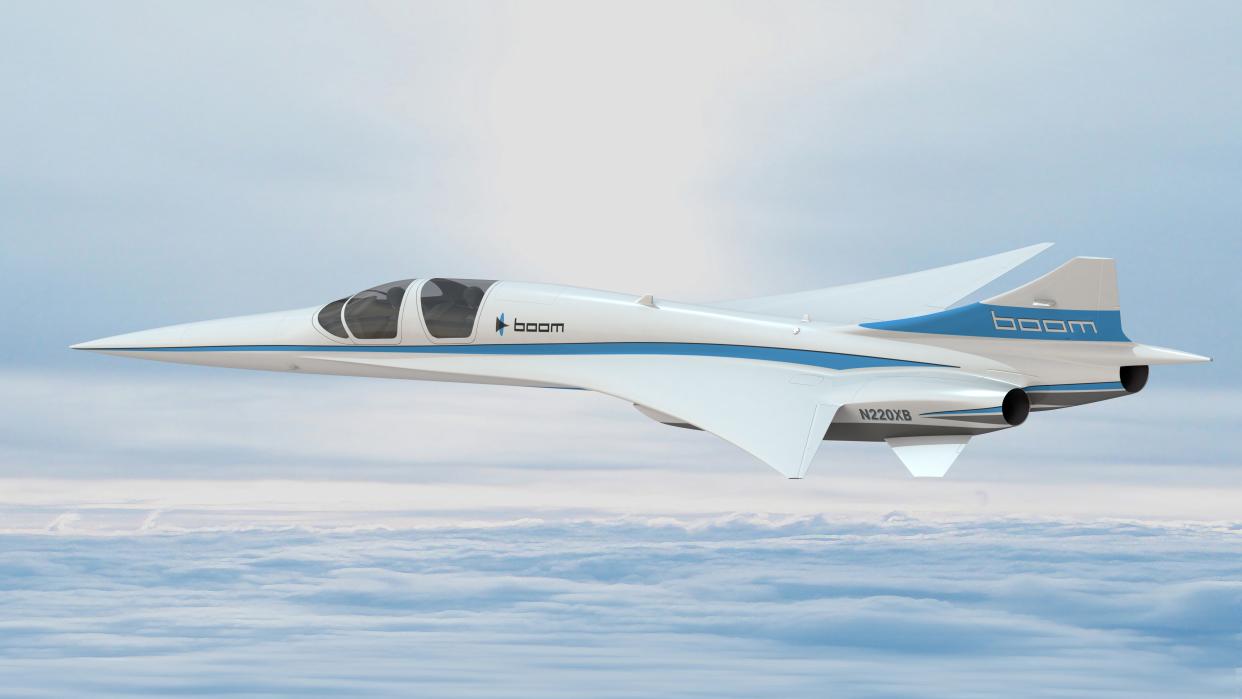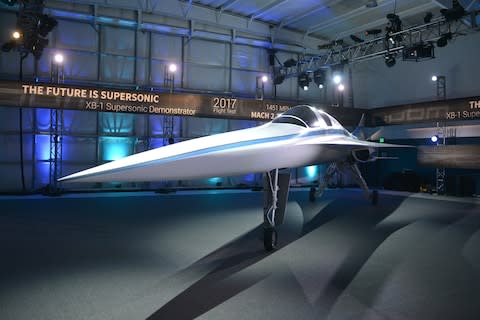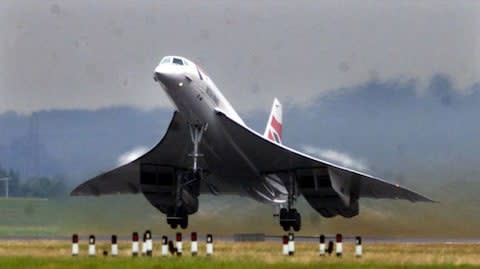'New Concorde' could be in the skies as early as next year

There are times when the idea of supersonic flight can seem like a sports car far ahead of you on a straight road.
You can see it there in the distance, and you know its existence is real rather than theoretical (even if it also feels like a fragment of the past) - but then the vehicle dips over the horizon or around a bend, and vanishes from view.
The story - that a replacement for Concorde is imminent - reemerges every few months. Here, here and here, for example. So anyone dreaming of a second era when an aircraft will soar across the Atlantic in under four hours might be sceptical about the latest suggestion that the return of supersonic air travel is but a few short years away.
And yet, here we are again, with the news that a jet capable of dashing between New York and London at sound-barrier-breaking speeds could be put through its test-flight paces as early as next year.
Such is the claim being made by ambitious aviation company Boom Technology - a Colorado-based start-up which has been making giant strides into the world of next-generation aircraft since it began operations in 2014.

According to the firm's CEO, Blake Scholl, a prototype of its "Boom Supersonic" plane will be in the sky as early as the end of 2018. Furthermore, he says, the company has already received more than 70 offers, from five different (unidentified) carriers for an aircraft that could be in commercial service by the middle of the next decade.
Speaking this week at the Dubai Airshow, Mr Scholl declared that the firm's XB-1 jet - which it has nicknamed "Baby Boom" - will revolutionise the way we travel.
The 18 most important aircraft of all time
"Think about for a moment the families that are separated because of the long flights," he said. "Think about the trips not taken because when you add up the lost hours, the trip just doesn't feel worth it."
"That's where we come in. We are a team of engineers and technologists, brought together for the sole purpose of making our world dramatically more accessible."
"Baby Boom" will, the company says, fly at Mach 2.2, and be capable of speeds of up to 1,451mph (2,330kph), while a full-sized version of the plane will be even swifter, at 1,687mph (2,330kph) – 100mph faster than Concorde.
At a glance | How fast do planes fly (mach)
However, even if the Boom Supersonic appears at airports as per Mr Scholl's timeline, it will not - initially, at least - mark the advent of a new supersonic age.
The first version of the jet for commercial travel is likely to have space for no more than 55 passengers - and is likely to be business-class-only.
Another configuration would see it set up with 30 business class seats, with a further 15 berths for first-class travellers - but supersonic travel for economy-class fliers is, as yet, still a distant proposition.

Mr Scholl argues, though, that flights on his company's planes will not be priced beyond the reach of most people.
"You won't have to be on the Forbes' list to be able to fly," he says.
"It will cost about the same as flying business class today. The ultimate goal is to make supersonic affordable for anyone who flies."
Concorde: 40 fascinating facts
Boom Supersonic has had a helping hand from Sir Richard Branson. Virgin Atlantic has an option for 10 of the aircraft, while Virgin Galactic, the company's space-travel wing, will be involved in the testing process.

